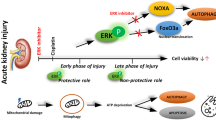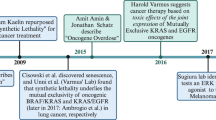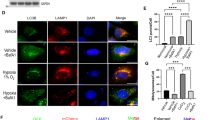Abstract
Urokinase plasminogen activator receptor (uPAR) plays a major role in cancer invasion and metastasis and uPAR expression is correlated with a poor prognosis in various cancer types. Moreover, the expression of uPAR is increased under hypoxic conditions. Nitric oxide (NO) and its metabolites produced by inducible nitric oxide synthase (iNOS) are important products of hypoxic stress, and NO may activate or modulate extracellular signal regulated kinase (ERK). Here, we evaluated uPA, uPAR, and activated ERK levels under hypoxic conditions, and the modulatory effects of iNOS and NO in the MDA-MB-231 human breast cancer cell line. Cells were incubated in a hypoxic or normoxic incubator and treated with PD98059 (a MEK 1/2 inhibitor, which abrogates ERK phosphorylation) and aminoguanidine (a selective iNOS inhibitor). uPAR expression, ERK phosphorylation, and uPA activity were found to be increased under hypoxic conditions. Moreover, when cells were treated with PD98059 under hypoxic conditions, uPAR was downregulated, whereas aminoguanidine markedly increased ERK phosphorylation in a dose dependent manner. Furthermore, aminoguanidine increased uPAR expression and prevented the inhibition of uPAR expression by PD98059. These results demonstrated that uPAR is induced by hypoxia and that increased uPAR expression is mediated by ERK phosphorylation, which in turn is modulated by iNOS/NO in MDA-MB-231 cells. We conclude that iNOS/NO downregulates the expression of uPAR under hypoxic conditions via ERK pathway modulation.
Similar content being viewed by others
Log in or create a free account to read this content
Gain free access to this article, as well as selected content from this journal and more on nature.com
or
References
Harris AL . Hypoxia—a key regulatory factor in tumor growth. Nat Rev Cancer 2002; 2:38–47.
Graham CH, Fitzpatrick TE, McCrae KR . Hypoxia stimulates urokinase receptor expression through a heme protein-dependent pathway. Blood 1998; 91:3300–7.
Graham CH, Forsdike J, Fitzgerald CJ, Macdonald-Goodfellow S . Hypoxia-mediated stimulation of carcinoma cell invasiveness via upregulation of urokinase receptor expression. Int J Cancer 1999; 80:617–23.
Krishnamachary B, Berg-Dixon S, Kelly B, et al. Regulation of colon carcinoma cell invasion by hypoxia-inducible factor 1. Cancer Res 2003; 63:1138–43.
Fukuda R, Hirota K, Fan F, et al. Insulin-like growth factor 1 induces hypoxia-inducible factor 1-mediated vascular endothelial growth factor expression, which is dependent on MAP kinase and phosphatidylinositol 3-kinase signaling in colon cancer cells. J Biol Chem 2002; 277:38205–11.
Rofstad EK, Danielsen T . Hypoxia-induced metastasis of human melanoma cells: involvement of vascular endothelial growth factor-mediated angiogenesis. Br J Cancer 1999; 80:1697–707.
Rofstad EK, Rasmussen H, Galappathi K, et al. Hypoxia promotes lymph node metastasis in human melanoma xenografts by up-regulating the urokinase-type plasminogen activator receptor. Cancer Res 2002; 62:1847–53.
De Jaeger K, Kavanagh MC, Hill RP . Relationship of hypoxia to metastatic ability in rodent tumours. Br J Cancer 2001; 84:1280–5.
Young SD, Marshall RS, Hill RP . Hypoxia induces DNA overreplication and enhances metastatic potential of murine tumor cells. Proc Natl Acad Sci U S A 1988; 85:9533–7.
Koong AC, Denko NC, Hudson KM, et al. Candidate genes for the hypoxic tumor phenotype. Cancer Res 2000; 60:883–7.
Lee KH, Choi EY, Hyun MS, Kim JR . Involvement of MAPK pathway in hypoxia-induced up-regulation of urokinase plasminogen activator receptor in a human prostatic cancer cell line, PC3MLN4. Exp Mol Med 2004; 36:57–64.
Ma Z, Webb DJ, Jo M, Gonias SL . Endogenously produced urokinase-type plasminogen activator is a major determinant of the basal level of activated ERK/MAP kinase and prevents apoptosis in MDA-MB-231 breast cancer cells. J Cell Sci 2001; 114:3387–96.
de Vries TJ, van Muijen GN, Ruiter DJ . The plasminogen activation system in tumour invasion and metastasis. Pathol Res Pract 1996; 192:718–33.
Blasi F, Carmeliet P . uPAR: a versatile signaling orchestrator. Nat Rev Mol Cell Biol 2002; 3:932–43.
Schmitt M, Harbeck N, Thomssen C, et al. Clinical impact of the plasminogen activation system in tumor invasion and metastasis: prognostic relevance and target for therapy. Thromb Haemost 1997; 78:285–96.
Pollanen J, Stephens RW, Vaheri A . Directed plasminogen activation at the surface of normal and malignant cells. Adv Cancer Res 1991; 57:273–328.
Melillo G, Musso T, Sica A, et al. A hypoxia-responsive element mediates a novel pathway of activation of the inducible nitric oxide synthase promoter. J Exp Med 1995; 182:1683–93.
Yu L, Gengaro PE, Niederberger M, et al. Nitric oxide: a mediator in rat tubular hypoxia/reoxygenation injury. Proc Natl Acad Sci U S A 1994; 91:1691–5.
Melillo G, Taylor LS, Brooks A, et al. Functional Requirement of the Hypoxia-responsive Element in the Activation of the Inducible Nitric Oxide Synthase Promoter by the Iron Chelator Desferrioxamine. J Biol Chem 1997; 272:12236–43.
Duenas-Gonzalez A, Isales CM, del Mar Abad-Hernandez M, et al. Expression of inducible nitric oxide synthase in breast cancer correlates with metastatic disease. Mod Pathol 1997; 10:645–9.
Phoa N, Epe B . Influence of nitric oxide on the generation and repair of oxidative DNA damage in mammalian cells. Carcinogenesis 2002; 23:469–75.
Vakkala M, Kahlos K, Lakari E, et al. Inducible nitric oxide synthase expression, apoptosis, and angiogenesis in in situ and invasive breast carcinomas. Clin Cancer Res 2000; 6:2408–16.
Loibl S, Buck A, Strank C, et al. The role of early expression of inducible nitric oxide synthase in human breast cancer. European Journal of Cancer 2005; 41:265–71.
Jadeski LC, Chakraborty C, Lala PK . Nitric oxide-mediated promotion of mammary tumour cell migration requires sequential activation of nitric oxide synthase, guanylate cyclase and mitogen-activated protein kinase. Int J Cancer 2003; 106:496–504.
Chan ED, Riches DWH . IFN-γ + LPS induction of iNOS is modulated by ERK, JNK/SAPK, and p38mapk in a mouse macrophage cell line. Am J Physiol Cell Physiol 2001; 280:C441–50.
Ahmed N, Oliva K, Wang Y, et al. Proteomic profiling of proteins associated with urokinase plasminogen activator receptor in a colon cancer cell line using an antisense approach. Proteomics 2003; 3:288–98.
Aguirre Ghiso JA, Kovalski K, Ossowski L . Tumor Dormancy Induced by Downregulation of Urokinase Receptor in Human Carcinoma Involves Integrin and MAPK Signaling. J Cell Biol 1999; 147:89–104.
Minet E, Arnould T, Michel G, et al. ERK activation upon hypoxia: involvement in HIF-1 activation. FEBS Letters 2000; 468:53–8.
Mottet D, Michel G, Renard P, et al. Role of ERK and calcium in the hypoxia-induced activation of HIF-1. J Cell Physiol 2003; 194:30–44.
Jadeski LC, Hum KO, Chakraborty C, Lala PK . Nitric oxide promotes murine mammary tumour growth and metastasis by stimulating tumour cell migration, invasiveness and angiogenesis. Int J Cancer 2000; 86:30–9.
Ellies LG, Fishman M, Hardison J, et al. Mammary tumor latency is increased in mice lacking the inducible nitric oxide synthase. Int J Cancer 2003; 106:1–7.
Palmer LA, Semenza GL, Stoler MH, Johns RA . Hypoxia induces type II NOS gene expression in pulmonary artery endothelial cells via HIF-1. Am J Physiol Lung Cell Mol Physiol 1998; 274:L212–9.
Nagao K, Takenaka S, Yamaji R, et al. Nitric oxide synthase induction, cGMP elevation, and biopterin synthesis in vascular smooth muscle cells stimulated with interleukin-1â in hypoxia. J Biochem (Tokyo) 2003; 133:501–5.
Rofstad EK, Mathiesen B, Galappathi K . Increased metastatic dissemination in human melanoma xenografts after subcurative radiation treatment: radiation-induced increase in fraction of hypoxic cells and hypoxia-induced up-regulation of urokinase-type plasminogen activator receptor. Cancer Res 2004; 64:13–8.
Radi R, Beckman J, Bush K, Freeman B . Peroxynitrite oxidation of sulfhydryls. The cytotoxic potential of superoxide and nitric oxide. J Biol Chem 1991; 266:4244–50.
Noronha-Dutra AA, Epperlein MM, Woolf N . Reaction of nitric oxide with hydrogen peroxide to produce potentially cytotoxic singlet oxygen as a model for nitric oxide-mediated killing. FEBS Lett 1993; 321:59–62.
Polte T, Oberle S, Schroder H . Nitric oxide protects endothelial cells from tumor necrosis factor-alpha-mediated cytotoxicity: possible involvement of cyclic GMP. FEBS Lett 1997; 409:46–8.
Palacios-Callender M, Quintero M, Hollis VS, et al. Endogenous NO regulates superoxide production at low oxygen concentrations by modifying the redox state of cytochrome c oxidase. Proc Natl Acad Sci U S A 2004; 101:7630–5.
Wink D, Hanbauer I, Krishna M, et al. Nitric Oxide Protects Against Cellular Damage and Cytotoxicity From Reactive Oxygen Species. Proc Natl Acad Sci U S A 1993; 90:9813–7.
Postovit LM, Adams MA, Lash GE, et al. Oxygen-mediated regulation of tumor cell invasiveness. Involvement of a nitric oxide signaling pathway. J Biol Chem 2002; 277:35730–7.
Matthews NE, Adams MA, Maxwell LR, et al. Nitric Oxide-Mediated Regulation of Chemosensitivity in Cancer Cells. J Natl Cancer Inst 2001; 93:1879–85.
Mitani Y, Zaidi SHE, Dufourcq P, et al. Nitric oxide reduces vascular smooth muscle cell elastase activity through cGMP-mediated suppression of ERK phosphorylation and AML1B nuclear partitioning. FASEB J 2000; 14:805–14.
Mateo J, Garcia-Lecea M, Cadenas S, et al. Regulation of hypoxia-inducible factor-1alpha by nitric oxide through mitochondria-dependent and -independent pathways. Biochem J 2003; 376:537–44.
Yu SM, Hung LM, Lin CC . cGMP-elevating agents suppress proliferation of vascular smooth muscle cells by inhibiting the activation of epidermal growth factor signaling pathway. Circulation 1997; 95:1269–77.
Schafer M, Schafer C, Ewald N, et al. Role of redox signaling in the autonomous proliferative response of endothelial cells to hypoxia. Circ Res 2003; 92:1010–5.
Zhang HJ, Zhao W, Venkataraman S, et al. Activation of matrix netalloproteinase-2 by overexpression of manganese superoxide dismutase in human rreast cancer MCF-7 cells involves reactive oxygen species. J Biol Chem 2002; 277:20919–26.
Johansson N, Ala-aho R, Uitto V, et al. Expression of collagenase-3 (MMP-13) and collagenase-1 (MMP-1) by transformed keratinocytes is dependent on the activity of p38 mitogen-activated protein kinase. J Cell Sci 2000; 113 Pt 2:227–35.
Kim MS, Lee EJ, Kim HR, Moon A . p38 kinase is a key signaling molecule for H-Ras-induced cell motility and invasive phenotype in human breast epithelial cells. Cancer Res 2003; 63:5454–61.
Author information
Authors and Affiliations
Corresponding author
Rights and permissions
About this article
Cite this article
Yoon, S., Lee, Y., Seo, J. et al. uPAR expression under hypoxic conditions depends on iNOS modulated ERK phosphorylation in the MDA-MB-231 breast carcinoma cell line. Cell Res 16, 75–81 (2006). https://doi.org/10.1038/sj.cr.7310010
Received:
Revised:
Accepted:
Published:
Issue date:
DOI: https://doi.org/10.1038/sj.cr.7310010
Keywords
This article is cited by
-
Mechanisms of action of sacubitril/valsartan on cardiac remodeling: a systems biology approach
npj Systems Biology and Applications (2017)
-
Thyroid hormone enhanced human hepatoma cell motility involves brain-specific serine protease 4 activation via ERK signaling
Molecular Cancer (2014)
-
Long-term interferon-α treatment suppresses tumor growth but promotes metastasis capacity in hepatocellular carcinoma
Journal of Cancer Research and Clinical Oncology (2010)
-
The tumor microenvironment and metastatic disease
Clinical & Experimental Metastasis (2009)
-
BRMS1 suppresses breast cancer metastasis in multiple experimental models of metastasis by reducing solitary cell survival and inhibiting growth initiation
Clinical & Experimental Metastasis (2008)



